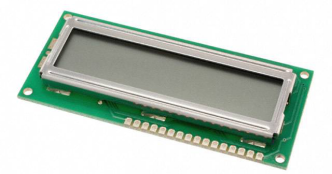LCD liquid crystal display principle and RGB principle
The common understanding of the liquid crystal display is that each point of the TFT liquid crystal display is composed of three parts of RGB. When three points are all connected to a high level, the liquid crystal melts into a liquid state to be transparent, so that the backlight color is white; When all three points are low, the liquid crystal solidifies into a crystal shape, completely blocking the backlight, so it is black.
When the points of R are all high, and G and B are all low, the display is red;
When the points of G are all high, and R and B are all low, the display is green;
When the points of B are all high, and R and B are all low, they are displayed in blue.
Second, the RGB principle:
The RGB color principle uses three primary colors: Red, Green, and Blue to add in different proportions to generate colored lights of different colors.
The principle of the three primary colors is not due to physical reasons, but due to physiological reasons. There are several kinds of cone-shaped photoreceptors that distinguish colors in the human eye, which are most sensitive to yellow-green, green, and blue-violet (or violet) light (wavelengths of 564, 534, and 420 nm, respectively). The cells are stimulated slightly more than the green cells, and the human feeling is yellow; if the yellow-green cells are more stimulated than the green cells, the human feeling is red. Although the three cells are not most sensitive to red, green, and blue, respectively, the three lights can stimulate the three cones separately.
For example, red light and green light are combined in a certain ratio, and the color perception produced by the stimulation of the three cone-shaped cells can be equivalent to the color perception of the eye to pure yellow light. However, it must not be considered that red and green light are combined in a certain proportion to produce yellow light, or yellow light is a combination of red light and green light.
Third, the understanding of some statements in S3C2440
Bpp term: bits per pixel How many bits per pixel.
a, 24bpp, this is the most common 16 million color standard
In this mode, RGB uses unsigned integer 16 bits to indicate the intensity of red, green, and blue colors. For example, 0xFF00FF is magenta, which can be named because it can have up to 16 million combinations (2 to 24 is 16777216).
b, 16bpp, this is the 65,000 color standard used by the S3C2440 (2 the 16th power is 65536)
The 16-bit mode is assigned to 5 bits for each primary color, where Green is 6 bits, because the human eye is more precise in distinguishing green light (in some places, each 5 bits are used, and the remaining 1 bit is not used), so The RGB we use here is the 5:6:5 mode.
The red code for the entire screen in the factory code is: LCD ClearScr ((0x1f "1111||0x00" "5)|0x00); exactly 11111 000000 00000 is allocated according to the 5:6:5 mode, so it is red.
If you want to know more, our website has product specifications for LCD, you can go to ALLICDATA ELECTRONICS LIMITED to get more information


